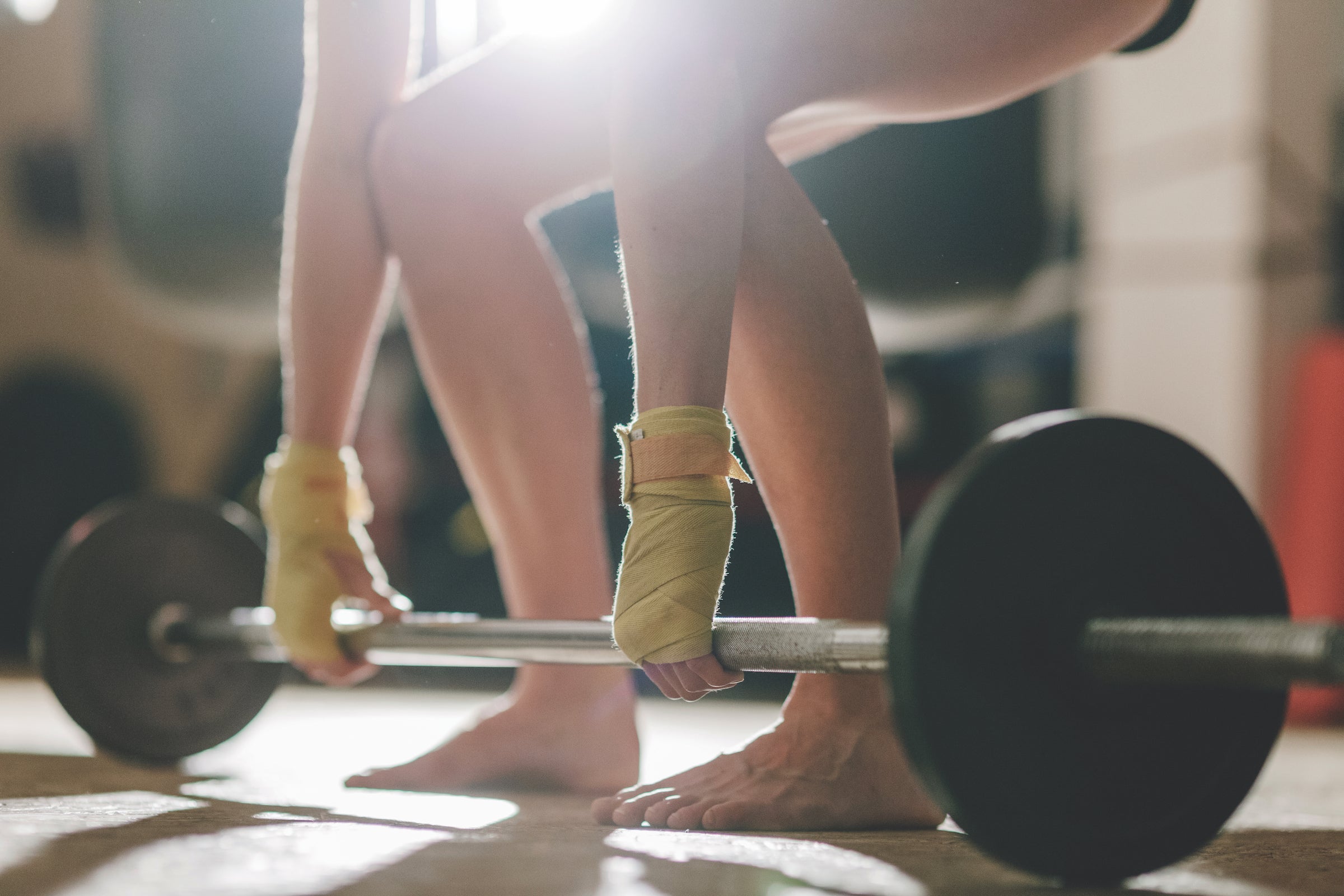The Perks of Barefoot Training

(Photo: GettyImages)
A good pair of shoes seems like a no-brainer for resistance training, yet every now and then, you’ll see a super-fit person crushing a workout in bare feet. Is there something to this, or is it just some peculiar personal preference? Our dynamic duo of experts weighs in and give a yea or nay on barefoot training.
Shayla Rog: New York–based transformation coach and owner of Operation: Badass
Consensus: YEA
Barefoot training can drastically improve your productivity and performance as well as how well you perform your big lifts. While no method should be viewed as one-size-fits- all and individual needs and environments should always be taken into consideration, kicking off your squishy, cushioned shoes can provide better stability, mobility and force production — especially for major compound lifts such as squats and deadlifts.
When you “dial your feet in” (pushing your big toes, then little toes, then heels into the ground while slightly “screwing your feet” outward), you create an intrinsically strong base that transmits the tension from the ground and up through the ankles, knees, hips and spine. Shedding the barrier between your feet and the floor creates a more dynamic connection.
Lisa Giglio, MS, CSCS: Personal trainer and sports coordinator for the Marine Corps Community Services in Beaufort, South Carolina
Consensus: YEA
Barefoot training can be a great supplement to your regimen, but it has a time and a place. Generally speaking, shoes minimize the sensory components of the feet because they do some of the stabilization for you. Incorporating barefoot training challenges the stabilizing muscles in the legs and helps build a more solid base.
The two main types of barefoot training are running and lifting. Running barefoot may help strengthen your arches, benefiting balance and allowing for better elastic energy when running. According to a study published in the Journal of Strength and Conditioning Research, barefoot running was shown to improve economy by decreasing your oxygen cost, allowing you to work more efficiently. Strength training sans shoes allows your feet to connect with the ground, improving force production. Cross-training and running shoes in particular provide a lot of cushioning, which absorbs energy when you’re lifting and detracts from your efforts.
3 Tips for Barefoot Training Safely
Go ahead, kick off your shoes. Just make sure to follow these helpful pointers when you do.
Ease into it. “The foot muscles are typically underdeveloped from years of wearing shoes and will be sore at first from barefoot training,” Rog says. “Slowly introduce volume over time. Perform warm-ups and activation drills for a while, then add in one or two new lifts as your muscles adapt. Consider [reducing] the weight on the exercises you’re performing when going barefoot while you adjust.”
Location, location, location. “Lifting heavy weights and being in a gym setting can be dangerous if you — or those around you aren’t careful,” Giglio says. “Many gyms don’t even allow barefoot training due to liability issues.” Outdoor training also can be risky because of unpredictable surfaces (rocks, potholes, debris, etc.), so keep your shoes in these scenarios. Instead, look for other opportunities to train barefoot, such as exercising at home or running on a level surface like a track.
Pick and choose. Most barefoot benefits come from ground-based exercises performed while standing, like squats, deadlifts, standing shoulder presses and the like. However, keep your shoes on when doing seated or lying exercises. There are few benefits to baring it all here, and the risks of dropping a weight on your feet outweigh the rewards. “Also, plyometric training may not be ideal for barefoot training due to possible strain on the tendons and ligaments,” Giglio says.